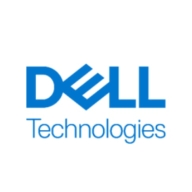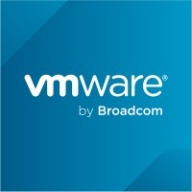

VMware vSAN and Dell vSAN Ready Nodes compete in the virtual SAN technology space. VMware vSAN appears to have the upper hand in terms of integration with VMware products, which is crucial for environments heavily invested in VMware.
Features: VMware vSAN offers strong orchestration and flexibility in expanding resources, seamless integration into the VMware ecosystem, and high scalability ideal for consolidated management. Dell vSAN Ready Nodes excel in reliable performance, impressive storage management, and flexibility, crucial for a range of workloads.
Room for Improvement: VMware vSAN needs enhanced integration with hybrid clouds, improved monitoring tools, and better scalability options. Addressing compatibility issues and streamlining troubleshooting and upgrades is also necessary. Dell vSAN Ready Nodes could benefit from simpler deployment, improved integration with public cloud platforms, and more automated upgrade processes.
Ease of Deployment and Customer Service: VMware vSAN is favored for ease of integration with existing VMware environments, with extensive support for smooth deployment. However, response times vary. Dell vSAN Ready Nodes are known for stable support but need more user-friendly setup processes. Both solutions are valued for supportive customer services, but demand faster response times.
Pricing and ROI: VMware vSAN is considered expensive, but its stability and feature set offer high ROI for larger businesses. Dell vSAN Ready Nodes, though potentially more costly initially versus alternatives like Lenovo or HPE, provide competitive pricing models and long-term savings through effective resource management. Both require significant investment but deliver positive ROI through decreased maintenance and operational efficiencies.
The OPEX benefits are around 30 to 40% because the same engineer who manages vSphere can handle Dell vSAN Ready Nodes, eliminating the need for additional support engineers.
Starting with a smaller infrastructure and scaling as required allows us to save costs initially.
I have seen a return on investment; it's satisfactory in the long run.
Whether we have pro support plus or just the basic level, they are helpful and reliable as long as we provide the necessary details.
If we require a replacement part, the engagement is usually within four hours
There is always room for improvement in terms of response time and reaching knowledgeable staff quickly.
I would rate their support nine points.
I am not satisfied with VMware support, particularly with the reaction times, SLAs, and those kinds of issues.
Sometimes the issue is that you don't get the best experience, whether it's the response time or first-level support quality.
With VCF we have significant automation built-in within the VCF console within SDDC manager as the primary management console.
I would rate scalability around seven because when customers want to expand capacity but all the drive slots are full, they are forced to buy new servers or nodes which adds more costs with licenses and hardware.
It supports up to 64 nodes in a cluster, allowing us to add nodes and expand the cluster as needed.
A disk group for five disks can be problematic, and customers need to tolerate downtime if the disk is not available.
In terms of stability, I give VMware vSAN nine points.
I would want VMware to ensure that when there's a hardware failure on a host, it should gracefully migrate the VMs to another host available in the cluster without restarting, which would be a great improvement.
Dell vSAN Ready Nodes are useful as a product, but the lack of expansion with VMware has led customers to refrain from further upgrades.
A faster firmware lifecycle with the release of validated firmware catalogs more quickly would be a desired improvement.
A proper monitoring tool that encompasses both applications and infrastructure would help in quickly resolving issues.
Maybe incorporation of automation to build clusters in a more automated way would be beneficial.
As a group under Comcast, we receive very good pricing from Dell due to our considerable business dealings.
This has resulted in a slight cost increase.
It is stable, and similar to any issues on a standalone machine, there's resilience; if we lose one host, data will not be lost because of the technology on vSAN that allows us to free up that host into maintenance mode without issues.
The ability for single-team management without requiring a separate storage team for managing arrays and fiber channel switches is also a valuable feature.
Dell's technical support is generally very good.
Hot add features are available by default in vSphere, allowing us to immediately increase memory, CPU, and hard drive without any downtime.
The VMware vSAN feature that has had the greatest impact on operational efficiency is the basic software-defined storage functionality.
A one-stack solution from one vendor is the main benefit here.
| Product | Market Share (%) |
|---|---|
| VMware vSAN | 13.0% |
| Dell vSAN Ready Nodes | 2.9% |
| Other | 84.1% |


| Company Size | Count |
|---|---|
| Small Business | 7 |
| Midsize Enterprise | 3 |
| Large Enterprise | 11 |
| Company Size | Count |
|---|---|
| Small Business | 98 |
| Midsize Enterprise | 58 |
| Large Enterprise | 128 |
Dell EMC vSAN Ready Nodes are pre-configured building blocks that reduce deployment
risks with certified configurations, improve storage efficiency by up to 50%1
, and can help
you build or scale your vSAN cluster faster.14 Whether you're just getting started, and/or
expanding your existing VMware environment, Dell EMC is here for you every step of the
way with consulting, education, deployment and support services for the entire solution.
VMware vSAN is a software-defined storage product that is used in collaboration with VMware ESXi hypervisor and that provisions and manages storage based on policies, regardless of the underlying hardware. The solution enables you to prime your business for growth through its seamless evolution (it is integrated with vSphere and requires no new tools), its flexibility, and its multi-cloud capabilities. As an industry-leading software, VMware vSAN provides high levels of performance with minimal impact on CPU and memory.
VMware vSAN Features
VMware vSAN has many valuable key features. Some of the most useful ones include:
VMware vSAN Benefits
There are many benefits to implementing VMware vSAN. Some of the biggest advantages the solution offers include:
Reviews from Real Users
Below are some reviews and helpful feedback written by PeerSpot users currently using the VMware vSAN solution.
PeerSpot user Yves S., CEO, Cloud Evangelist at Comdivision Consulting GmbH, says, “vSAN gives us a lot of advantages when we need to expand resources. We have an overall larger host infrastructure, and we split that up for specific customer test and use cases. In that specific scenario, we can easily add more hosts or reduce the number of hosts in the environment.”
A reviewer who works in Infrastructure Security explains, “The ease of use is great. The initial setup and upgrade process was pretty straightforward. And, technical support is great.”
Laurent N., Director at Softlogic, comments, "The feature that I have found most valuable is that it is easy to deploy. It is easy to create and delete virtual servers. It is easy to create the load balancing and the clustering."
We monitor all HCI reviews to prevent fraudulent reviews and keep review quality high. We do not post reviews by company employees or direct competitors. We validate each review for authenticity via cross-reference with LinkedIn, and personal follow-up with the reviewer when necessary.